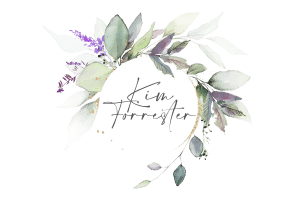How to work through the ‘angst of unwinding’

I’ve been trying my hardest to do ‘nothing’ for the past month. After skating very close to the edge of burnout throughout May, I decided that my mind, body, and spirit needed a deliberate easing of pace. So, in early June, I completed everything essential in a determined final push (studies, a public event, life admin, and other obligations), and emptied my June calendar.
What have I learned in these weeks of deliberate ease? I’ve learned that I am really, really bad at doing nothing. And I have been reminded that slowing down (something that is essential for sustainable wellbeing) does not always feel like relief and relaxation – for many of us, it initially feels like angst, restlessness, and boredom.
For the month of July, as part of my exploration into life’s natural timings, I am taking a deep dive into our inherent need for calm and rest. However, any conversation about “making Me Time” or “scheduling in stillness” is empty and ineffective if we don’t also confront the reality of slowing down in our hyper-paced modern world.
We are natural beings with a natural momentum and when we gift ourselves time to stop and rest, that momentum – like a whirlpool of energy and productivity – begins to press against us. We feel resistance against our habitual daily tempo, and it often has physical and emotional consequences:
- We get restless, anxious, and irritable as our body starts draining adrenaline and cortisol.
- We experience fatigue and lower energy levels as our body responds to being in fight-flight for an extended period.
- The emotions we have suppressed or have been too busy to pay attention to start bubbling up, asking for attention.
- The whirlpool of our life’s momentum begins to press against us, causing racing thoughts, difficulty sleeping, or a sense of angst.
- Our body responds with stress responses like headaches or tension.
- Our brain’s resources are depleted, and we lose memory or focus.
How does that look in our lives? If we are working or running a business and we take a holiday, we often fall ill, feel stressed out, and/or cry a lot. (Interestingly, cortisol has been found in stress tears. Crying is a way for our body to drain stress hormones from our system!) If we are busy throughout the day and come to a sudden stop, we can have trouble falling or staying asleep. After a lifetime of activity and busyness, many people experience depression after retirement or retrenchment.

Slowing down is incredibly good for us, but it is often also deeply unfamiliar and discomforting – and this is a reality we need to accept if we want to reap the benefits of a healthy life tempo.
So, how can we deal with the discomfort of slowness and move more gently into a sense of stillness and nourishment?
Potter About
Pottering – those small, unhurried, meaningful tasks done without pressure or agenda – has been shown to lower stress and increase wellbeing. If stillness is too discomforting for you, choose instead to tidy a drawer, rearrange a shelf, or water the garden simply because it soothes you. Pottering is its own quiet medicine.
Expect and accept discomfort
When the pace drops, your nervous system may protest. Restlessness, irritability, and even unexpected emotion may rise to the surface. Instead of resisting, try this: “This is my body unwinding. I welcome the exhale.” Your discomfort is not a failure; it’s a signal that you’re on the road to slowness and regeneration.
Use your holidays wisely
Aim for breaks of 8 to 11 days from your work or business, allowing just enough time to settle, restore, and return to your duties with a sense of rejuvenation. Research shows that scattering these mini-retreats across the year (rather than saving them all for one big trip) enhances wellbeing and avoids intense before- and after-holiday stress.
Slow your tempo like a soft dimmer switch
Whether it’s the end of a long day, a semester, or a busy season, resist the temptation to slam on the brakes. Instead, ease out of activity as much as possible and allow your life tempo to gradually subside, like a whirlpool slowly settling. Gradual winding down helps your body and brain align with your intention to rest.
Let boredom guide you
Behind the discomfort of boredom lies the gift of mind-wandering: space for creativity, introspection, and quiet insight. Next time you’re feeling bored or ‘blah’, instead of reaching for your phone or television, choose to doodle, gaze out the window, or follow your curiosity. There’s wisdom to be found in that unhurried mental meandering.
Connect to replenish
Stillness doesn’t have to mean solitude. A walk in nature, a chat over tea, or sitting quietly with someone you love can ease the transition into slowness. Connection anchors us – to each other, to the Earth, and to a sense of being part of something nurturing and meaningful.
It is imperative for our wellbeing that we slow down at regular intervals and gift ourselves rest, respite, and rejuvenation. However, it’s vital to understand the real-life consequences of these restful moments. When you are used to life ‘on the run’, quietness can feel discomforting. When your body is attuned to action and productivity, rest can feel irritating. When we understand and accept this reality, we can learn to lean into the angst of unwinding and move more gently – and more fully – into the stillness we all crave and deserve.
Many of us, in our modern lives, have become disconnected from the concept of natural timing and life’s innate rhythms. For the remainder of 2025, I will be exploring what it means to have a healthy relationship with time and the natural cadence of life. My exploration continues this month of July when I will be sharing tips on how to pause, rest, and slow down our life tempo for greater wellbeing. Join me on Instagram or Linkedin for regular updates and insights.

Your first newsletter arrived in my inbox a few days ago.
I waited until I had some slow quiet space.
Then I took time to read, savour and really listen to and then meditate on the words. Thank you Kim.
Hi Trudy, thank you so much for your time, support, and kind words. I am grateful for community members like you.